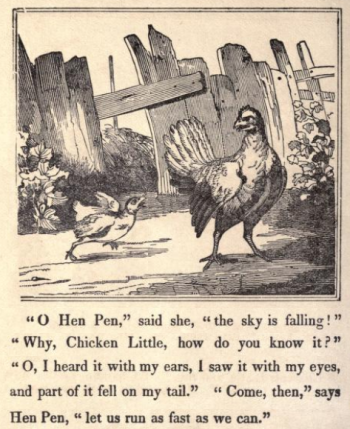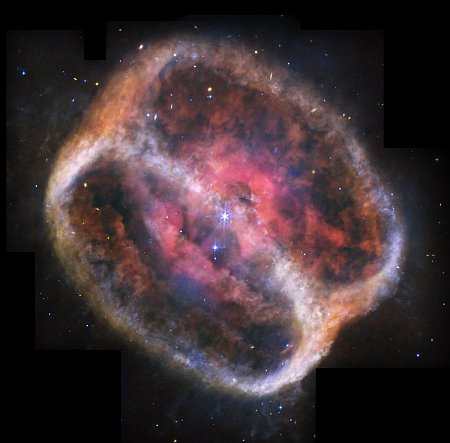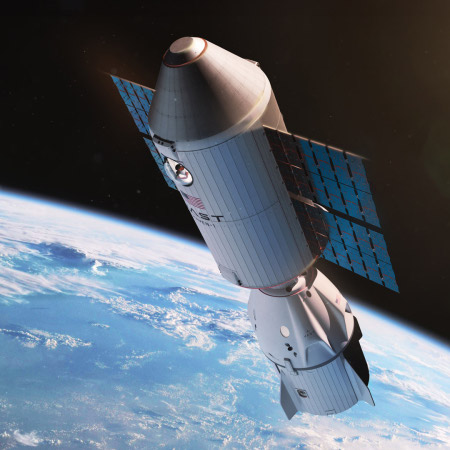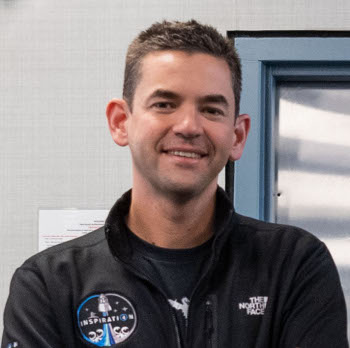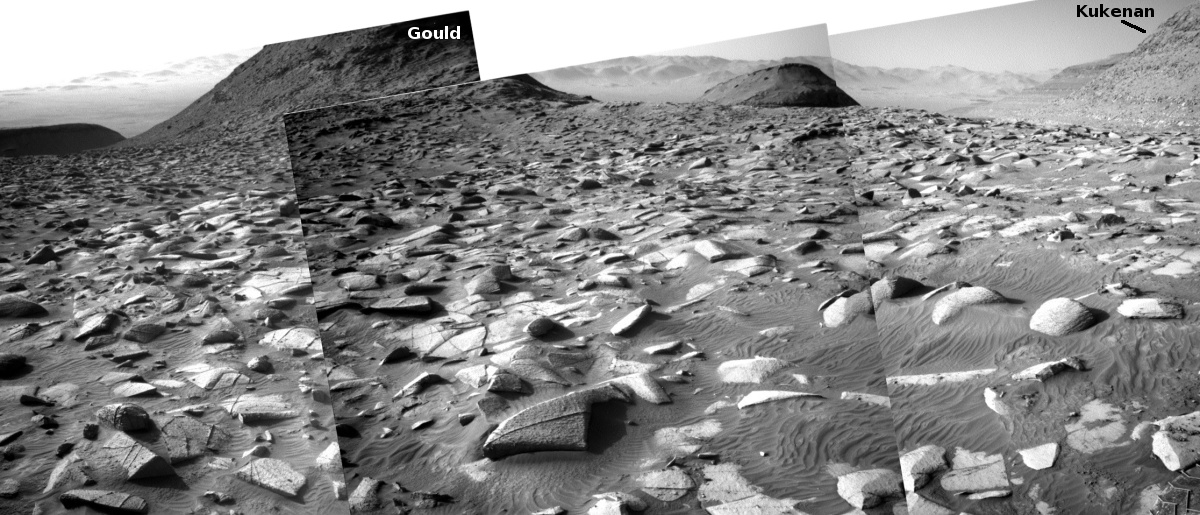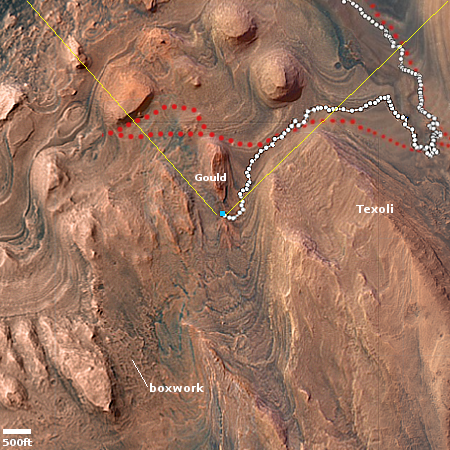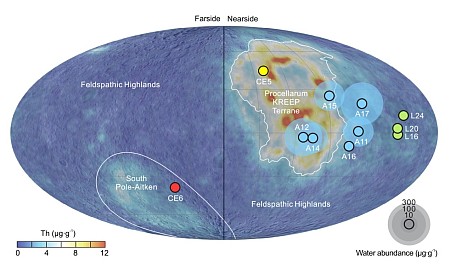Lucy’s next asteroid fly-by on April 20, 2025
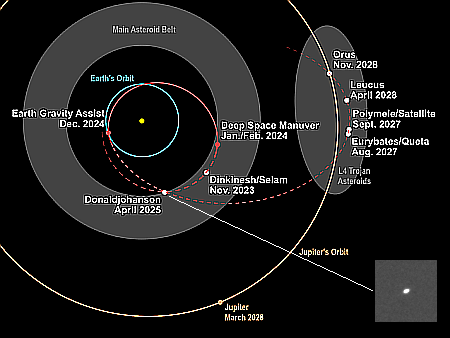
Lucy’s route to the asteroids, with its first picture
of Donaldjohanson in lower right, taken in February.
Click for original blink animation.
The science team operating the probe Lucy are now preparing for the spacecraft’s second asteroid fly-by, set of April 20, 2025, and passing within 600 miles of the surface of asteroid Donaldjohanson.
Lucy’s closest approach to Donaldjohanson will occur at 1:51pm EDT on April 20, at a distance of 596 miles (960 km). About 30 minutes before closest approach, Lucy will orient itself to track the asteroid, during which its high-gain antenna will turn away from Earth, suspending communication. Guided by its terminal tracking system, Lucy will autonomously rotate to keep Donaldjohanson in view. As it does this, Lucy will carry out a more complicated observing sequence than was used at Dinkinesh [the first asteroid that Lucy saw up close in 2023]. All three science instruments – the high-resolution greyscale imager called L’LORRI, the color imager and infrared spectrometer called L’Ralph, and the far infrared spectrometer called L’TES – will carry out observation sequences very similar to the ones that will occur at the Trojan asteroids.
However, unlike with Dinkinesh, Lucy will stop tracking Donaldjohanson 40 seconds before the closest approach to protect its sensitive instruments from intense sunlight.
“If you were sitting on the asteroid watching the Lucy spacecraft approaching, you would have to shield your eyes staring at the Sun while waiting for Lucy to emerge from the glare. After Lucy passes the asteroid, the positions will be reversed, so we have to shield the instruments in the same way,” said encounter phase lead Michael Vincent of Southwest Research Institute (SwRI) in Boulder, Colorado. “These instruments are designed to photograph objects illuminated by sunlight 25 times dimmer than at Earth, so looking toward the Sun could damage our cameras.”
Unlike most of the Trojan asteroids Lucy will study, Donaldjohanson is a main belt asteroid. It is thought to be only 150 million years old, but its history would be expected to be very different than those Trojan asteroids.

Lucy’s route to the asteroids, with its first picture
of Donaldjohanson in lower right, taken in February.
Click for original blink animation.
The science team operating the probe Lucy are now preparing for the spacecraft’s second asteroid fly-by, set of April 20, 2025, and passing within 600 miles of the surface of asteroid Donaldjohanson.
Lucy’s closest approach to Donaldjohanson will occur at 1:51pm EDT on April 20, at a distance of 596 miles (960 km). About 30 minutes before closest approach, Lucy will orient itself to track the asteroid, during which its high-gain antenna will turn away from Earth, suspending communication. Guided by its terminal tracking system, Lucy will autonomously rotate to keep Donaldjohanson in view. As it does this, Lucy will carry out a more complicated observing sequence than was used at Dinkinesh [the first asteroid that Lucy saw up close in 2023]. All three science instruments – the high-resolution greyscale imager called L’LORRI, the color imager and infrared spectrometer called L’Ralph, and the far infrared spectrometer called L’TES – will carry out observation sequences very similar to the ones that will occur at the Trojan asteroids.
However, unlike with Dinkinesh, Lucy will stop tracking Donaldjohanson 40 seconds before the closest approach to protect its sensitive instruments from intense sunlight.
“If you were sitting on the asteroid watching the Lucy spacecraft approaching, you would have to shield your eyes staring at the Sun while waiting for Lucy to emerge from the glare. After Lucy passes the asteroid, the positions will be reversed, so we have to shield the instruments in the same way,” said encounter phase lead Michael Vincent of Southwest Research Institute (SwRI) in Boulder, Colorado. “These instruments are designed to photograph objects illuminated by sunlight 25 times dimmer than at Earth, so looking toward the Sun could damage our cameras.”
Unlike most of the Trojan asteroids Lucy will study, Donaldjohanson is a main belt asteroid. It is thought to be only 150 million years old, but its history would be expected to be very different than those Trojan asteroids.

